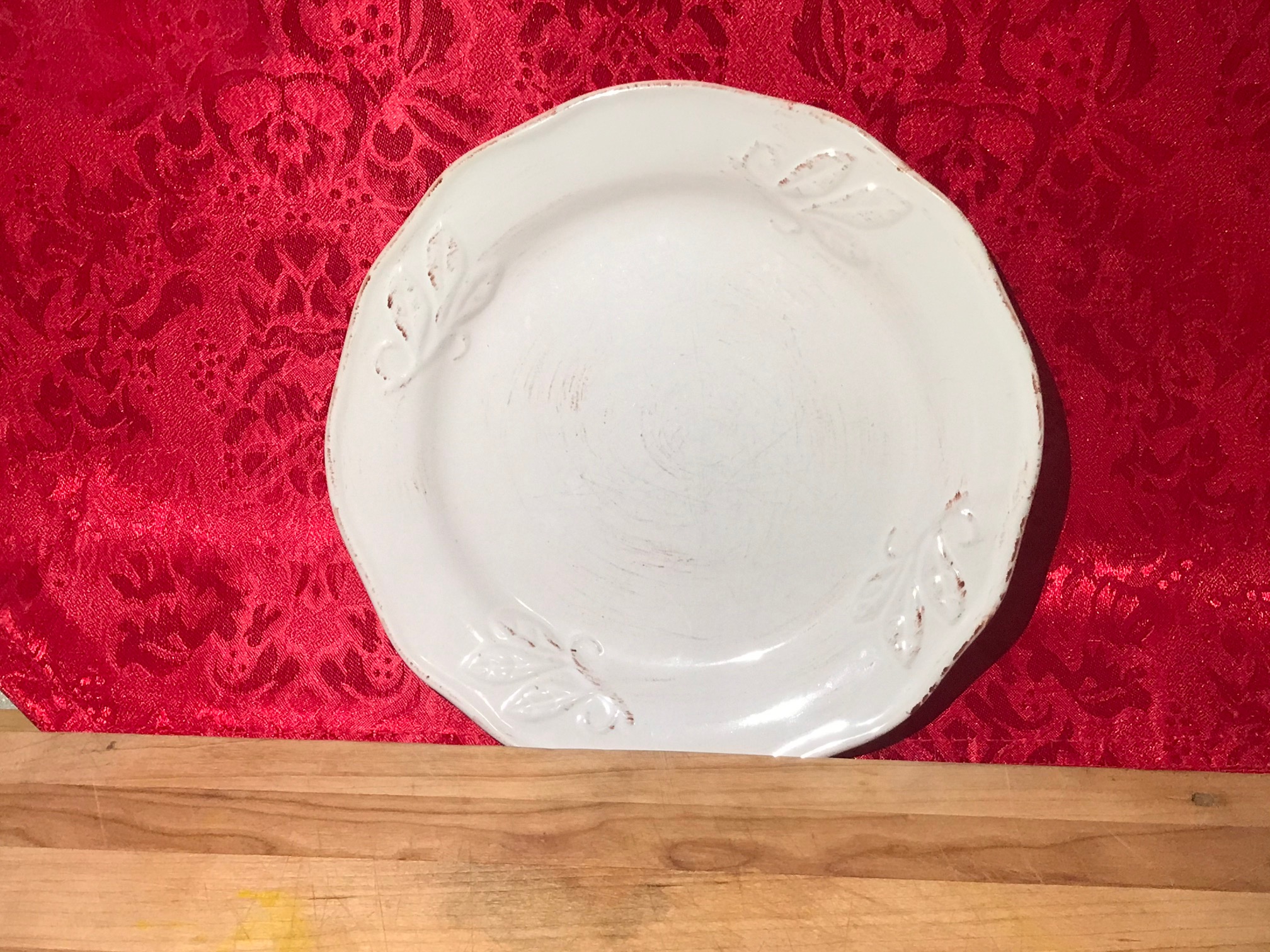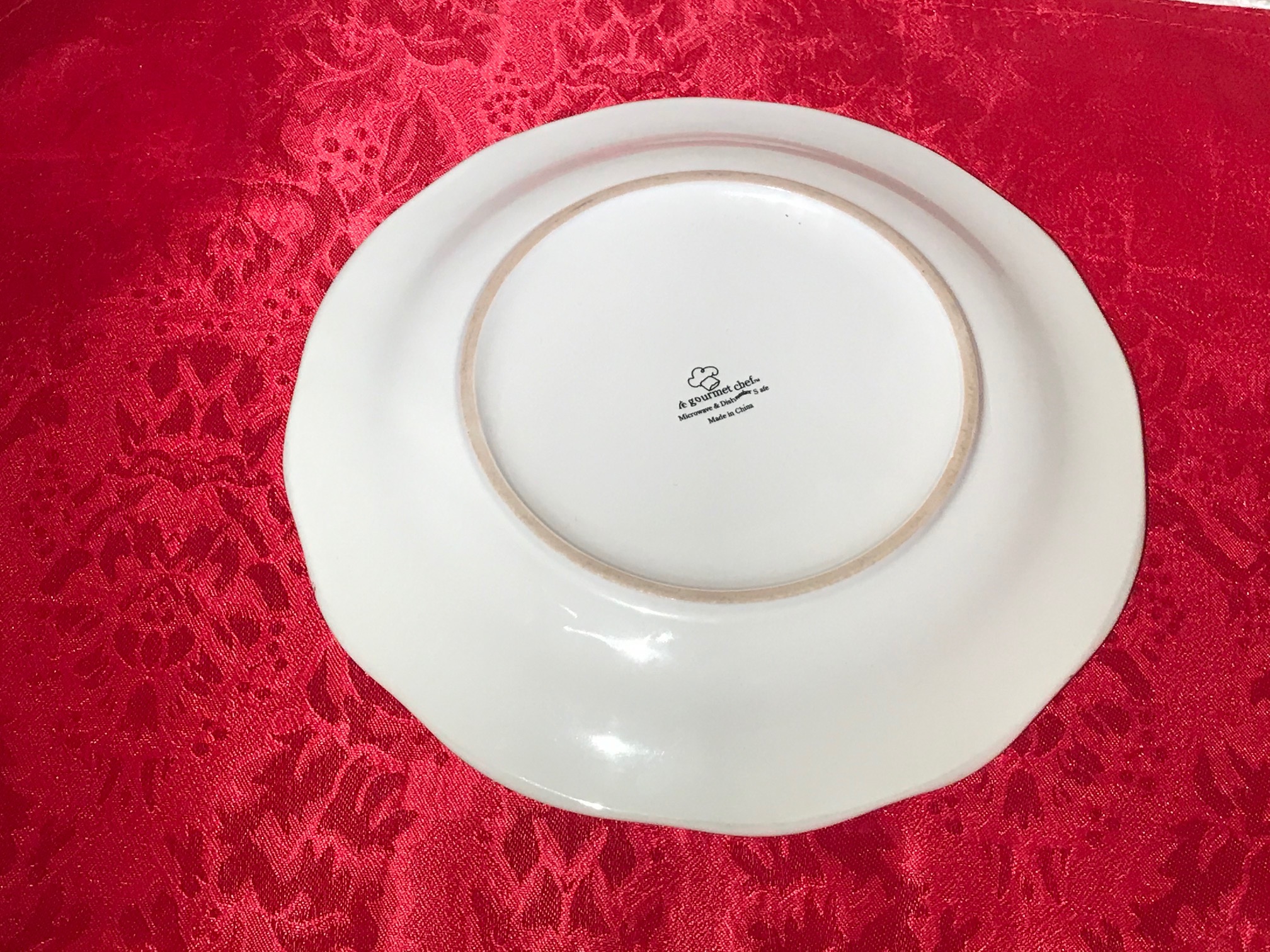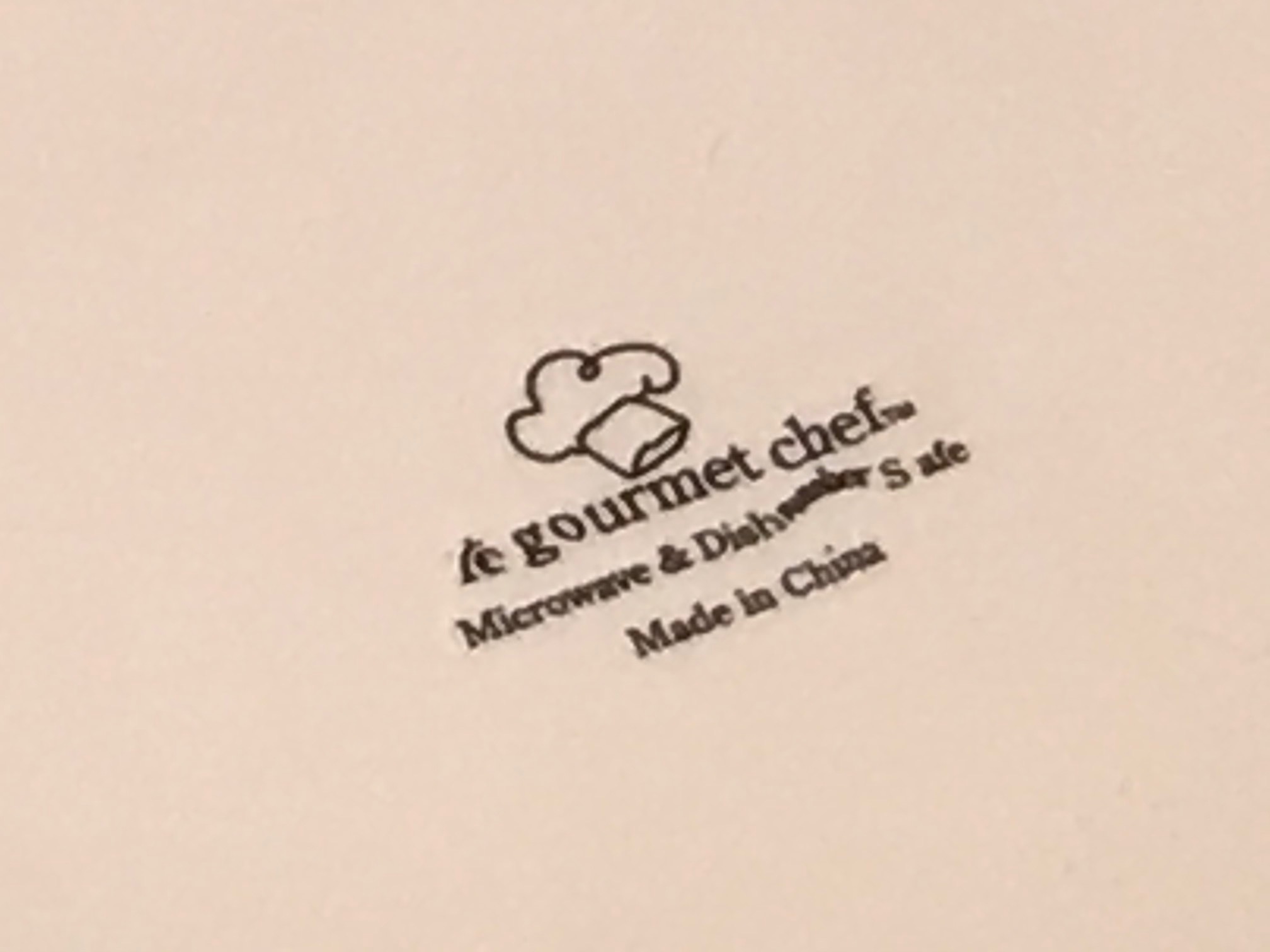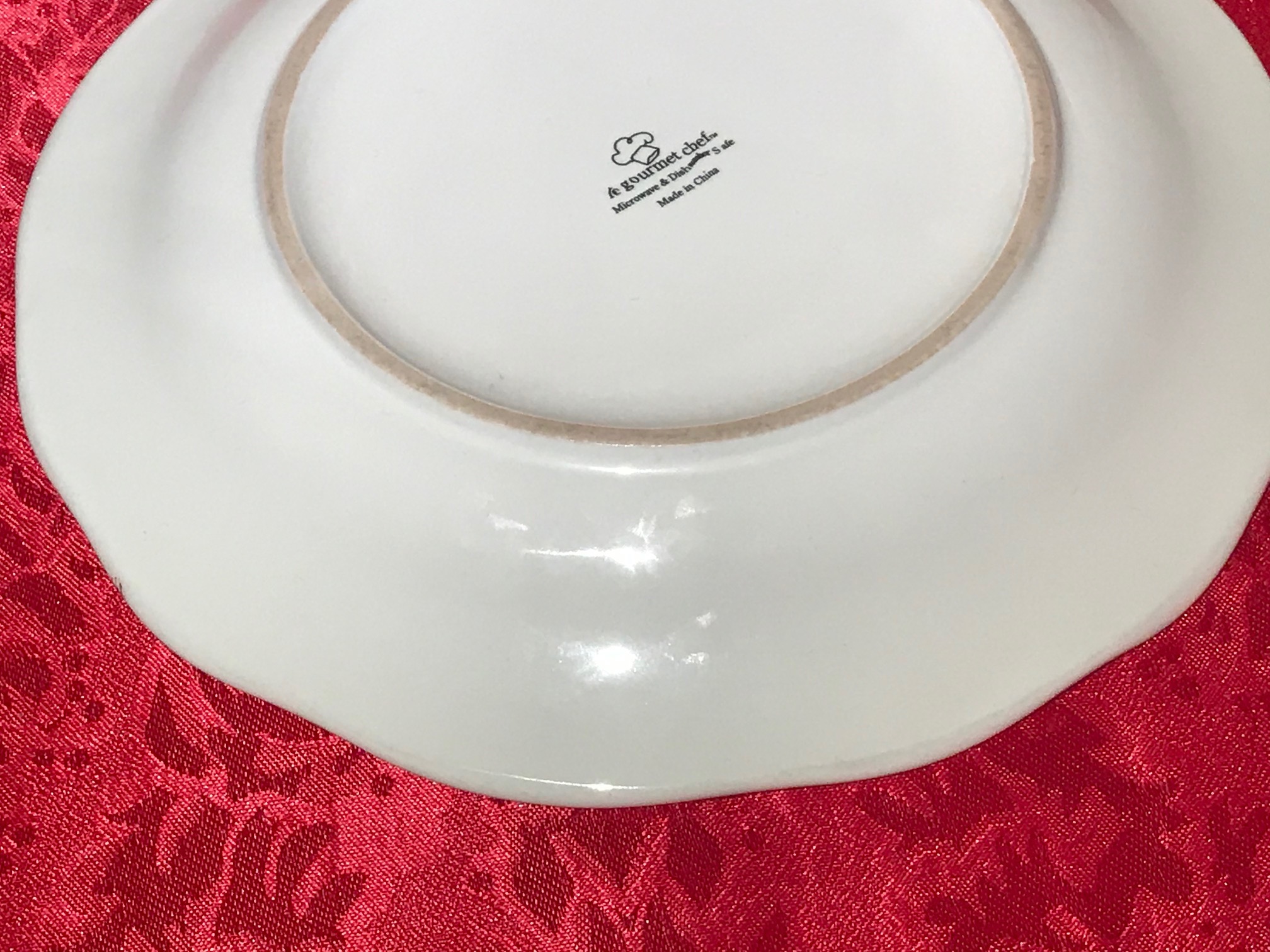Made In China Gourmet Chef Glazed Ceramic Dish: Lead-free glaze + 68 ppm Lead in the substrate. Safe by all standards.

 White Glazed Food Surface of the Dish:
White Glazed Food Surface of the Dish:
- Barium (Ba): 3,050 +/- 202 ppm
- Zinc (Zn): 13,500 +/- 500 ppm
- Copper (Cu): 421 +/- 79 ppm
- Iron (Fe): 990 +/- 242 ppm
- Vanadium (V): 2,718 +/- 167 ppm
- Titanium (Ti): 5,394 +/- 321 ppm
- Zirconium (Zr): 22,600 +/- 900 ppm
Back Logo Area of the Dish:
- Barium (Ba): 2,897 +/- 193 ppm
- Chromium (Cr): 4,170 +/- 221 ppm
- Zinc (Zn): 12,600 +/- 500 ppm
- Copper (Cu): 470 +/- 86 ppm
- Nickel (Ni): 847 +/- 150 ppm
- Iron (Fe): 12,700 +/- 700 ppm
- Vanadium (V): 2,441 +/- 156 ppm
- Titanium (Ti): 4,813 +/- 290 ppm
- Zirconium (Zr): 21,300 +/- 800 ppm
- Cobalt (Co): 2,270 +/- 285 ppm
Back Unglazed Edge of the Dish:
- Lead (Pb): 68 +/- 22 ppm
- Barium (Ba): 2,025 +/- 132 ppm
- Zinc (Zn): 7,943 +/- 331 ppm
- Copper (Cu): 361 +/- 69 ppm
- Iron (Fe): 2,797 +/- 316 ppm
- Vanadium (V): 1,860 +/- 117 ppm
- Titanium (Ti): 4,150 +/- 240 ppm
- Zirconium (Zr): 14,300 +/- 500 ppm
- Platinum (Pt): 237 +/- 97 ppm
XRF testing was done for a minimum of 60 seconds per component and repeated multiple times to confirm the results. Results are science based, accurate and replicable.
How much Lead is too much Lead?
The amount of Lead that is considered unsafe and illegal in a modern / newly manufactured item made and sold for use by children today is anything 90 ppm Lead or higher in the paint / glaze or coating and anything 100 ppm Lead or higher in the substrate. Ceramic dishes are not covered by this regulatory standard (even though it is my opinion that they should be because children also use dishes!) Regardless of the lack of regulations for dishes, this dish would be considered safe by all current standards.
As always, thank you for reading and for sharing my posts.
Please let me know if you have any questions.
Tamara Rubin
#LeadSafeMama

Never Miss an Important Article Again!
Join our Email List


 White Glazed Food Surface of the Dish:
White Glazed Food Surface of the Dish:
